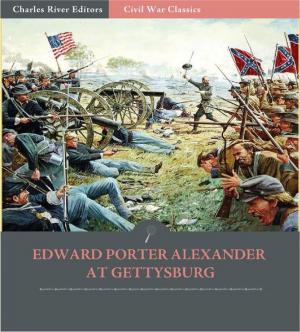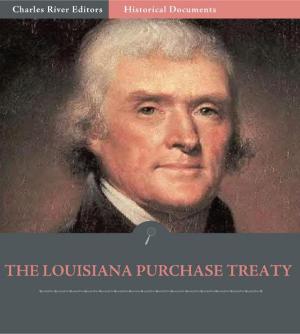Battles & Leaders of the Civil War: The Union Cavalry at Gettysburg
Nonfiction, History, Americas, United States, Civil War Period (1850-1877), Military, 19th Century| Author: | David M. Gregg | ISBN: | 9781619821842 |
| Publisher: | Charles River Editors | Publication: | January 18, 2012 |
| Imprint: | Language: | English |
| Author: | David M. Gregg |
| ISBN: | 9781619821842 |
| Publisher: | Charles River Editors |
| Publication: | January 18, 2012 |
| Imprint: | |
| Language: | English |
David McMurtrie Gregg (April 10, 1833 August 7, 1916) was a prominent Union cavalry general in the Civil War who distinguished himself in the Seven Days Battles, expertly screening retreating Union infantry. He fought at Antietam and during the Chancellorsville campaign, but cavalry had little role in those fights. It was after Chancellorsville that the cavalry on both sides began to face off increasingly. During the start of the Gettysburg Campaign, Lee's stealthy troop movements away from the Fredericksburg area caused Union consternation and Pleasonton was ordered to find out where they were going. Launching a surprise attack on Maj. Gen. J.E.B. Stuart at Brandy Station resulted in the largest predominantly cavalry engagement of the war. While Buford attacked, Gregg led the 2nd and 3rd Divisions across Kelly's Ford to attack the flank and rear of the Confederates on Fleetwood Hill, where Stuart's headquarters were located. The fighting was fierce, saber-wielding, and hand-to-hand, but the Confederates managed to repulse Gregg and the battle was a draw. Importantly, the Union cavalry captured orders that indicated Lee's intentions to invade Maryland and Pennsylvania. After the war, Gregg wrote an account of the Union cavalrys participation during the Gettysburg Campaign, most notably the Battle of Brandy Station. Gregg also shortly discusses the cavalrys participation during the Battle of Gettysburg itself, an important but often forgotten part of the battle. In addition to Bufords initial defense that provided the Army of the Potomac time to come up and meet the advancing Confederates at Gettysburg, there were cavalry skirmishes on Day 3 that have been historically overshadowed by Picketts Charge. Greggs account of the Union Cavalry at Gettysburg became part of the well known Battles & Leaders of the Civil War series.
David McMurtrie Gregg (April 10, 1833 August 7, 1916) was a prominent Union cavalry general in the Civil War who distinguished himself in the Seven Days Battles, expertly screening retreating Union infantry. He fought at Antietam and during the Chancellorsville campaign, but cavalry had little role in those fights. It was after Chancellorsville that the cavalry on both sides began to face off increasingly. During the start of the Gettysburg Campaign, Lee's stealthy troop movements away from the Fredericksburg area caused Union consternation and Pleasonton was ordered to find out where they were going. Launching a surprise attack on Maj. Gen. J.E.B. Stuart at Brandy Station resulted in the largest predominantly cavalry engagement of the war. While Buford attacked, Gregg led the 2nd and 3rd Divisions across Kelly's Ford to attack the flank and rear of the Confederates on Fleetwood Hill, where Stuart's headquarters were located. The fighting was fierce, saber-wielding, and hand-to-hand, but the Confederates managed to repulse Gregg and the battle was a draw. Importantly, the Union cavalry captured orders that indicated Lee's intentions to invade Maryland and Pennsylvania. After the war, Gregg wrote an account of the Union cavalrys participation during the Gettysburg Campaign, most notably the Battle of Brandy Station. Gregg also shortly discusses the cavalrys participation during the Battle of Gettysburg itself, an important but often forgotten part of the battle. In addition to Bufords initial defense that provided the Army of the Potomac time to come up and meet the advancing Confederates at Gettysburg, there were cavalry skirmishes on Day 3 that have been historically overshadowed by Picketts Charge. Greggs account of the Union Cavalry at Gettysburg became part of the well known Battles & Leaders of the Civil War series.















